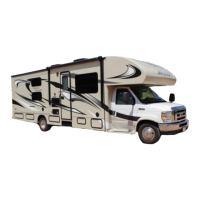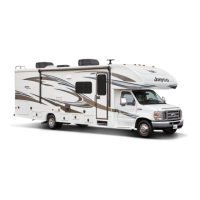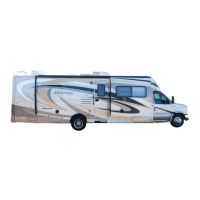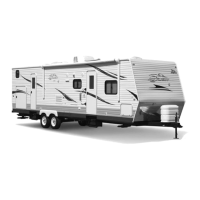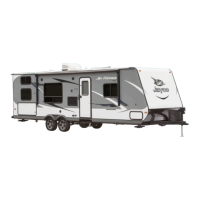CLASS C MOTORHOME SECTION 4 – VEHICLE OPERATION
4-7
WHEEL LUGS/WHEEL LINERS
Torque is the amount of rotating force applied to a fastener, such as a lug nut.
Proper torque of lug nuts can only be achieved by using a properly calibrated
torque wrench and socket. Do not use a 4-way socket or any other type of wrench
that does not measure the actual pressure applied to the lug nut.
NOTE: The proper method of tightening wheel lug nuts is with a torque
wrench, not with an impact wrench or by hand. Because of the importance of
having proper torque on the wheel lug nuts, you should always have the wheels
mounted and properly torqued by a qualified technician using the proper tools.
After your first trip, check the wheel lug torque periodically for safety according to
your Chassis Guide. If you suspect the wheel lug nuts have loosened at any time,
have them checked and torqued to the proper limits immediately.
Check and re-torque after the first 10, 25 and 50 miles (16, 40 and 80
kilometers). Thereafter, check and maintain the torque according to the
listed torque values.
Wheel lugs
If you suspect or notice the wheel stud bolts are cracked or broken, they must be
replaced, along with adjacent bolts that have probably also been weakened due to
the additional stress placed on them.
WHEEL BEARINGS & BRAKES
Follow the Chassis Guide maintenance instructions for the front and rear axle for
wheel and suspension maintenance, including the brakes and wheel bearings.
Contact your Chassis manufacturer for assistance.
EMERGENCY STOPPING
Always carry road flares or reflective warning signs to display if necessary. Pull off
the roadway as far as possible for emergency stopping. Turn ON your motor home
hazard warning flashers. If traveling at night, use three red warning indicators such
as flares, reflectors or lanterns, as follows:

